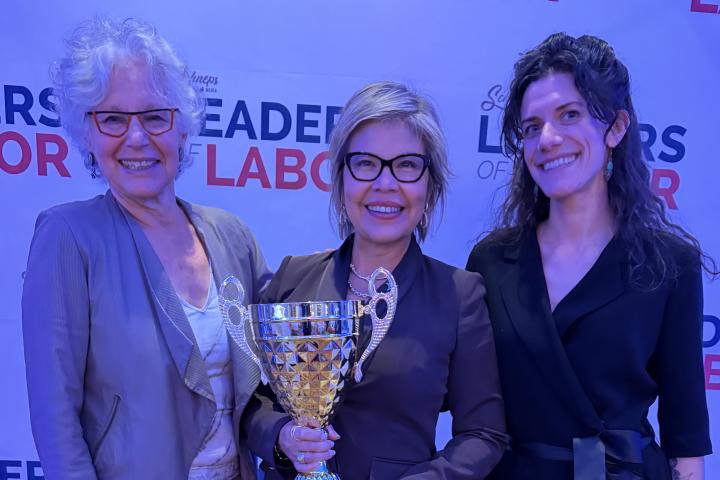
Q&A with Ileen A. DeVault
Professor Ileen DeVault of ILR’s Labor Relations, Law, and History Department teaches classes on labor and working-class history and is the author of two books, "Sons and Daughters of Labor" and "United Apart: Gender and the Rise of Craft Unionism.”
DeVault received a bachelor’s degree in women’s studies from the University of California, Berkeley, a master’s degree in history from the University of Pittsburgh and a doctorate in history from Yale University. DeVault is a graduate field faculty member of Cornell’s Feminist, Gender, and Sexuality Studies Program and, in September, completed a five-year term as academic director of ILR’s Worker Institute.
What research are you working on?
My current research examines both the patterns of capitalist logging and the attendant patterns of working-class life. My tentative title for the forthcoming book is “’Where the Wind Blows from All Directions: Land, Labor, Capital, and Family.” While our image of loggers remains that of single, "footloose" men living in bunkhouses (the "bindlestiffs" of the Industrial Workers of the World and reformers' legend) and performing the dangerous work of cutting down huge trees with saws and axes, the complex realities of logging include both that reality and several others, as well. The interactions of these things provide insight into the role that family ties played in the lives of working-class men. At first glance, this industry appears to have wrenched men away from their families. A deeper examination, however, uncovers ways in which the industry, in fact, created different (and possibly sometimes closer?) family ties for these men.
Early 20th century capitalism in the woods of Washington's Olympic Peninsula brought together men (and women, as my book will demonstrate) diverse in both motivations and skills in order to conquer the old growth forest. The Merrill & Ring Lumber Company, with its "headquarters camp" in Pysht, Washington, on the Olympic Peninsula from 1916 into the 1930s, provides a unique opportunity to explore the ways those motivations and skills interacted to shape the loggers' daily lives, their families, the operations of logging capital, and the very land "where the wind blew from all directions."
Interestingly, as I began this research, I was also involved in a (non-historical) project through the Worker Institute, which co-researcher Beth Livingston and I called “‘Men at Work’ (and Family): Caregiving Responsibilities Among the Working Class.” This project examined the child care experiences of mostly male members of a construction union who held precarious jobs which entailed varied and long hours.
Which stream of your research has most impacted your field and how so?
My research has always focused on the ways in which gender is affected by and affects the experiences of men and women in the workplace.
My first book, “Sons and Daughters of Labor: Class and Clerical Work in Turn-of-the-Century Pittsburgh,” interrogated the ways in which newly transformed “white collar” jobs in the late 19th and early 20th centuries could mean very different things for young men and women entering those jobs from “blue collar” families. I suggested that understanding this better requires us to rethink how we define ‘working class.’ This work continues to be referenced as one of the most nuanced discussions of class in the field.
More recently, I published an article, based on research I did for my second book, “United Apart: Gender and the Rise of Craft Unionism” in the journal “Labor History,” which suggests that historians need to look more carefully at just how women workers’ family status intersects with their range of economic activities. (“Family Wages: The Roles of Wives and Mothers in Working-Class Survival Strategies, 1880-1930,” Labor History, Jan. 2013)
What impact do you foresee for your research?
My hope is that my current research will interest more attention on the impact of family status on male workers. Historians of female workers almost always have as their first question about any situation: “Were these women workers single or married?” But, male workers are too often viewed as just “workers.” I want to convince both labor historians and labor relations scholars in general that we have to think about male workers’ family situations and their “work-life” balances as much as we do about those of women workers.
Ezra Cornell had a vision and desire to “do the most good.” How is ILR living up to that principle?
I think ILR has always lived up to Ezra’s desire to “do the most good,” largely through our state-based land-grant mission.
How do you try to make an impact on the students in your classes?
My hope is that I can get students to see how history impacts events in the present through getting them to see history not as a series of boring facts, but rather as living developments. I want them to be as excited about learning history as I am!


